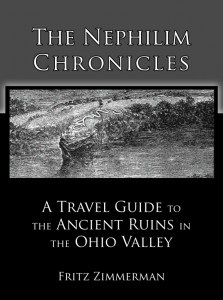American Indian Effigy Mounds Near Milwaukee Wisconsin
We next find, on sections twenty-nine and thirty, in township eight, and range twenty-two, on the west side of the river, at a place usually known as the Indian Prairie, about five miles north of the city of Milwaukee, a very interesting system or group of works. They are situated on a beautiful level plain, elevated about thirty feet above the river, which runs along the eastern border. The bank of the river is nearly perpendicular, forming a safe protection against attack from that direction. It may be seen by the map presented that these works are further protected on the north and south by deep ravines. The works are all included within these natural defences. Whether they were ever protected on the west seems doubtful. No traces of embankment or ditch could be found, nor any indication of other modes of defence usually adopted by uncivilized nations. There may have been defences of wood, long since decayed.
There are two principal mounds situated near the middle of this space. They are both fifty-three feet in diameter at the base, where they almost touch each other, and eight feet high. The southern one has a level area of twenty-five feet diameter at the top.
It often occurs in a group of works like this, that one mound is erected on the highest position, from the top of which the whole may be seen. These may be called the “Observatories,” a name that in this case belongs to the mound with the level area. It may also have been the place of sacrifice or altar-mound; but of this we can only judge from the analogy in form and position to similar works which elsewhere were undoubtedly used for that purpose. Surrounding these are numerous tumuli of a circular form, the exact relative positions of which were ascertained by survey, and represented on the map. No definite system or order of arrangement was observed, as will be evident on inspection.
These tumuli are from two to four feet high, and from ten to fifty-four feet in diameter at the base; many of them being unusually broad in proportion to their height. None are so high and prominent as the two first mentioned. The two mounds in the form of a cross at the southern extremity of this group will at once attract the attention of the reader. An enlarged plan is given of one, with its dimensions. The head of the cross is level on the top and rectangular. This form of mound is frequently found in Wisconsin.
But what marks this locality as one of peculiar interest, is the discovery of five works of excavation, of regular form, being the reverse of the usual works. Instead of an embankment of earth thrown up, we have here a cavity in the ground. Four of the excavations lie in a southwest direction from the two larger central mounds. In approaching the former from the latter, a small trail or path is discovered, which gradually, becomes larger and deeper, until it leads into a sunken area surrounded by embankments, composed probably of the earth thrown out of the excavation. Upon looking back, it is perceived that this pathway goes directly to the mounds. These excavations are shown on an enlarged scale on Figures 2 and 3. There are usually three curved entrances to each excavation, as shown in the figures.

